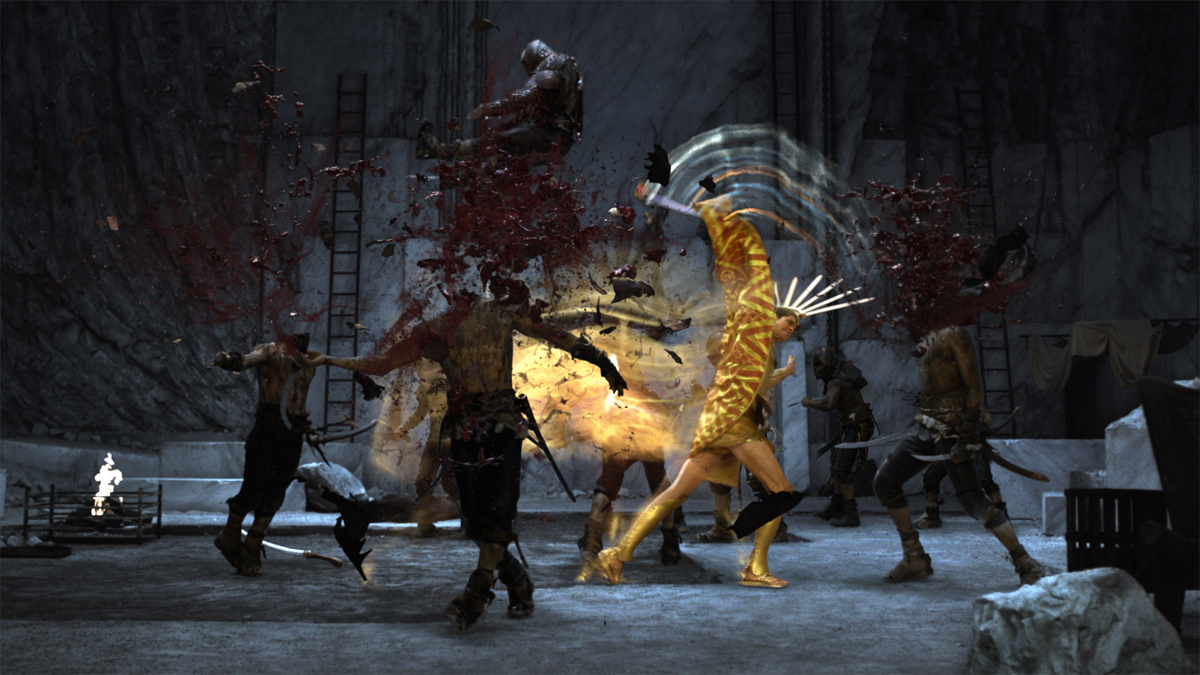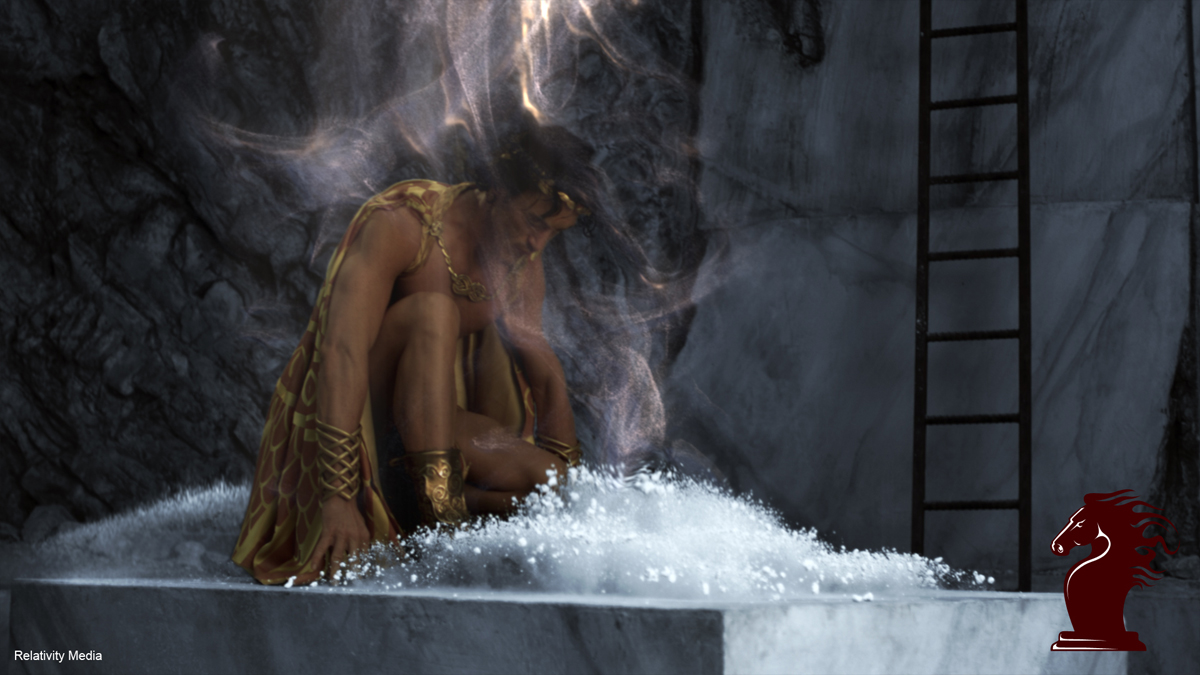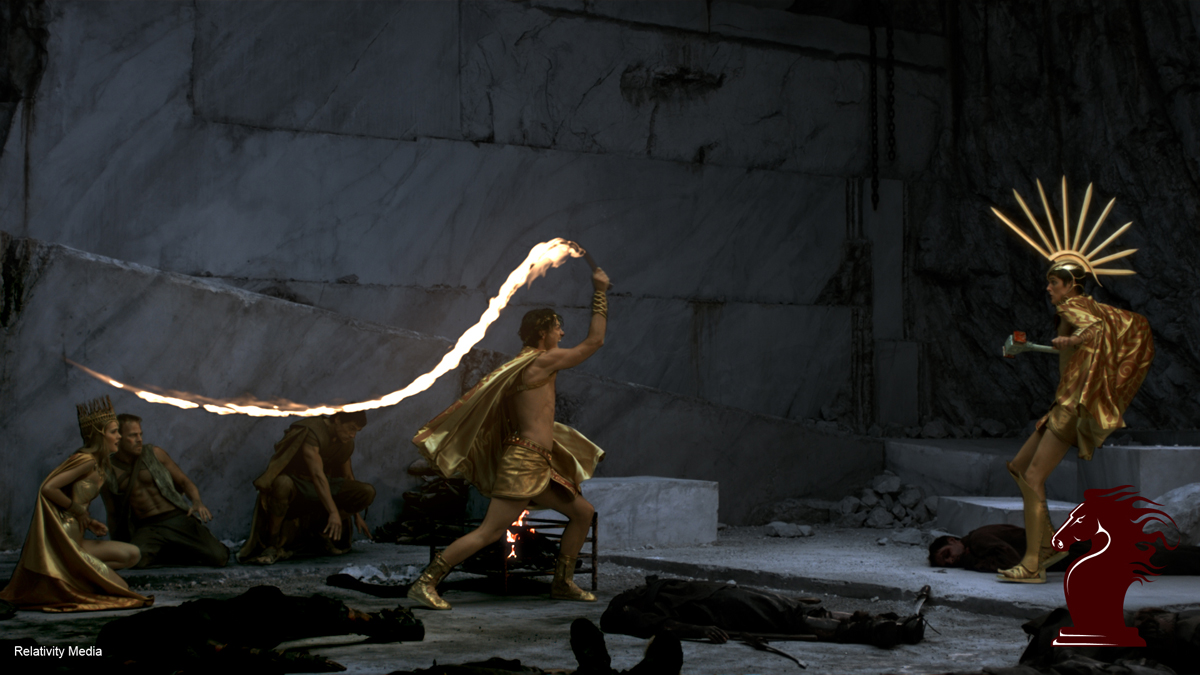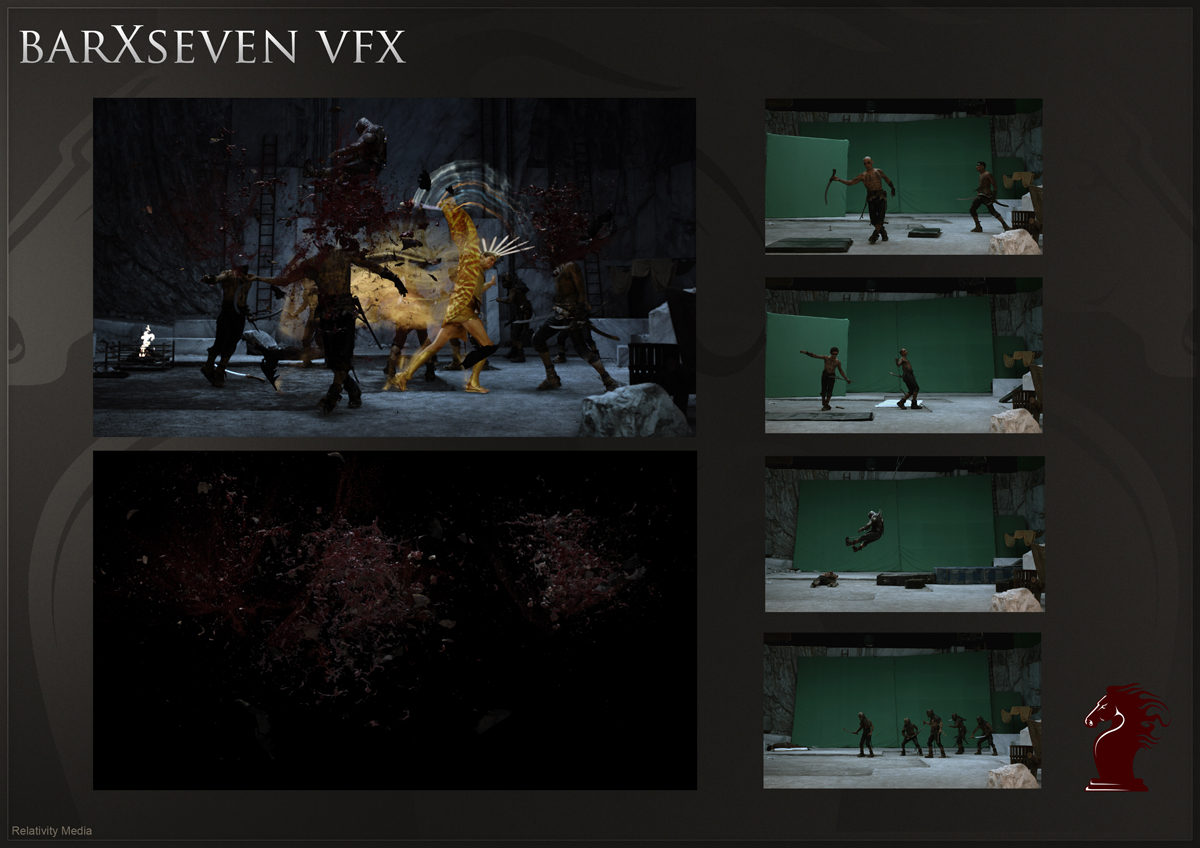Jay Randall started his career in 1997 working on GODZILLA. He then worked on films like THE FIFTH ELEMENT, PEARL HARBOR or TITANIC. In 2005, he founded the studio BarXseven in Montreal and work as a VFX supervisor on films like TRANSPORTER 2 or STRANGER THAN FICTION.
What is your background?
I have a degree in psychology from the University of Ottawa, then I went to Vancouver Film School. I launched BarXseven in 2005 after working as a character animator and FX TD on many film and TV projects such as THE FIFTH ELEMENT, PEARL HARBOR, GODZILLA, and TITANIC.
How did BarXseven got involved on this show?
Raymond Gieringer and I have worked together in the past. He was brought onto IMMORTALS by Relativity as VFX supervisor and then hired me to supervise the VFX for 2nd unit. BarXseven then became one of the main VFX vendors.
How was the collaboration with director Tarsem?
Tarsem has great ideas and is a very energetic person. It was a great experience to work with him and watch him create. When it comes to VFX, he is a veteren director and understands our needs and was very approachable and open to input.
How was the collaboration with Production VFX Supervisor Raymond Gieringer?
Raymond and I have worked on a few movies together and always collaborate very well. He really knows his stuff and has great creative vision. Raymond has put his trust in BarXseven on many occasions and we always make sure to repay him by giving him excellent work.
What did you do on this show?
We did over 100 shots but the ones that stand out occur when Aries comes down from Olympus and smashes heads. The heads explode in slow motion as Aries clobbers the bad guys with his war hammer. Another fun sequence of shots that we did occurs when Zeus lands on earth and punishes Aries by whipping him with a fire whip, also in slow motion.
How was this big impressive continuous shot filmed?
It looks continuous on the screen but it was not filmed continuously. It took 3 days to shoot the sequence in many small, carefully planned steps. We shot Aries first, hitting targets on green screen from different camera angles. We then switched to the phantom camera and shot the Heraklions at 500fps from the same angles.
Can you tell us how you approached this huge shot?
We spent a lot of time previzing the shots and figuring out the best approach. We broke the sequence into small details and shot each element separately. We had a very precise plan to create a smooth flowing sequence that looks continuous.
Did you create previs or an animatic for the choreography of the fight?
I worked with Jean Frenette the fight coordinator, along with stuntman Alain Moussi to choreograph the sequence. We motion captured Alain’s movements and used that as a basis for the previz. We built the entire sequence in Maya before we shot it.
How did you manage the super slow-motion aspect of the shot?
We shot Aries with a Genesis camera at 48fps and then shot the Heraklions at 500fps on a Phantom camera. The special effects guys built us some dummy heads filled hamburger and fake blood that we exploded while filming with the phantom for reference. We simulated the heads exploding based on that footage.
Did you create digi-doubles especially the soldier who crosses the entire room in the air?
No digi-doubles were used. The soldier that flew through the air was stuntman Max Savarias rigged up with wires. He is a big guy and he had to fly all the way across the room and hit a specific target, so it was a challenging shot.
How did you create the heads exploding?
We spent a lot of time studying slow motion liquid explosions. We shot some reference of heads exploding on set and also watched every clip we could find on youtube.
We tracked the stuntmen in each shot and put cg helmets on them. We then used those helmets as CG fluid containers for the simulations. We used Maya to create the exploding helmets and also for brain and bone chunks. We used Realflow for the viscous liquid and then topped it off with spray that was created in Houdini. It was a tricky thing to get all the simulation to work together. Steve Elphick was the main guy for the simulations. He did the Realfow and Maya work. Mike Lyndon did the Houdini particles, Charles LeGuen did the lighting and rendering and Rob Rossello comped the shots in Nuke. There is one guy that gets split down the middle. Matt Evans did that guy.
What was the biggest challenge on this project and how did you achieve it?
Once we had the simulations working and we were happy with our look we had to get them to render. The scenes and particle caches were so huge that it was taking forever to render all the layers, when it rendered at all. Charles LeGuen worked tirelessly to optimize the scenes and get them to render without losing any quality.
Was there a shot or a sequence that prevented you from sleep?
All of it was quite challenging and there was always something that needed sorting but the shots that were the most difficult were the fire whip shots. Mitch Deoudes did the fire using Maya liquids. There is one shot that was about 700 frames long and shot at 500fps. To get the fire to look great throughout the entire shot was very difficult. Mitch worked through the entire Christmas break, even on Christmas day on that one. I think he wanted to go in on New Years day as well but his activities the night before made that impossible.
How many shots did you do?
BarXseven did a little over 100 shots.
What is your next project?
We are currently working on Tarsem’s Snow White movie, MIRROR, MIRROR.
A big thanks for your time.
// WANT TO KNOW MORE?
– BarXseven: Dedicated Page about IMMORTALS on BarXseven website.
© Vincent Frei – The Art of VFX – 2011











